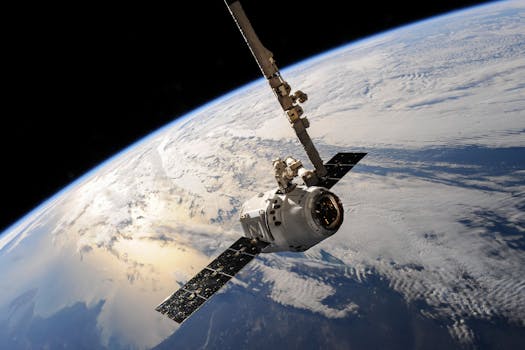MEO Satellites: Revolutionizing Global Communications with Medium Earth Orbit Technology – MEO Satellites

MEO Satellites: Revolutionizing Global Communications with Medium Earth Orbit Technology – MEO Satellites
MEO satellites, or Medium Earth Orbit satellites, are a type of satellite that operates in an orbital altitude of approximately 2,000 to 36,000 kilometers above the Earth’s surface. This range allows MEO satellites to provide a unique combination of global coverage, high bandwidth, and low latency, making them an attractive solution for various applications, including satellite communications, navigation, and Earth observation.
The use of MEO satellites has been gaining momentum in recent years, driven by advancements in technology and the growing demand for global connectivity. One of the primary advantages of MEO satellites is their ability to provide high-speed data transfer rates, making them suitable for applications that require fast and reliable communications, such as video conferencing, online gaming, and cloud computing.
In addition to their high bandwidth capabilities, MEO satellites also offer lower latency compared to traditional Geostationary Earth Orbit (GEO) satellites. This is because MEO satellites are closer to the Earth’s surface, resulting in shorter signal transmission times and a more responsive user experience. Furthermore, MEO satellites can provide a higher level of security and redundancy, as they are less susceptible to interference and can be easily replaced or reconfigured in the event of a malfunction.
Another significant benefit of MEO satellites is their ability to provide global coverage, including in areas where traditional terrestrial infrastructure is limited or non-existent. This makes them an ideal solution for applications such as remote broadband access, emergency communications, and maritime connectivity. MEO satellites can also be used to provide backup connectivity during natural disasters or outages, ensuring that critical communications remain available.
Applications of MEO Satellites
MEO satellites have a wide range of applications, including satellite communications, navigation, and Earth observation. In the field of satellite communications, MEO satellites are used to provide broadband access, mobile backhaul, and other services. They are also used in navigation systems, such as the Global Positioning System (GPS) and the European Geostationary Navigation Overlay System (EGNOS), to provide location information and timing signals.
In Earth observation, MEO satellites are used to collect data on the Earth’s surface and atmosphere, including weather patterns, ocean currents, and land use. This data is used in a variety of applications, such as weather forecasting, climate monitoring, and natural resource management. MEO satellites are also used in scientific research, such as studying the Earth’s magnetic field and the effects of space weather on the Earth’s atmosphere.
Challenges and Limitations of MEO Satellites
While MEO satellites offer many advantages, they also face several challenges and limitations. One of the primary challenges is the high cost of launching and operating MEO satellites, which can be prohibitively expensive for some organizations. Additionally, MEO satellites are subject to interference from other satellites and terrestrial systems, which can impact their performance and availability.
Another challenge facing MEO satellites is the need for complex and sophisticated ground infrastructure, including large antennas and high-power transmitters. This infrastructure can be difficult and expensive to establish and maintain, particularly in remote or hard-to-reach areas. Furthermore, MEO satellites are subject to regulatory constraints, such as licensing requirements and frequency allocation, which can limit their deployment and use.
Future Developments and Opportunities
Another trend is the development of new technologies, such as advanced propulsion systems, high-gain antennas, and sophisticated signal processing algorithms. These technologies are expected to improve the performance and efficiency of MEO satellites, enabling them to provide higher speeds, lower latency, and greater connectivity. Furthermore, the use of MEO satellites in emerging applications, such as the Internet of Things (IoT) and autonomous vehicles, is expected to drive innovation and growth in the industry.



